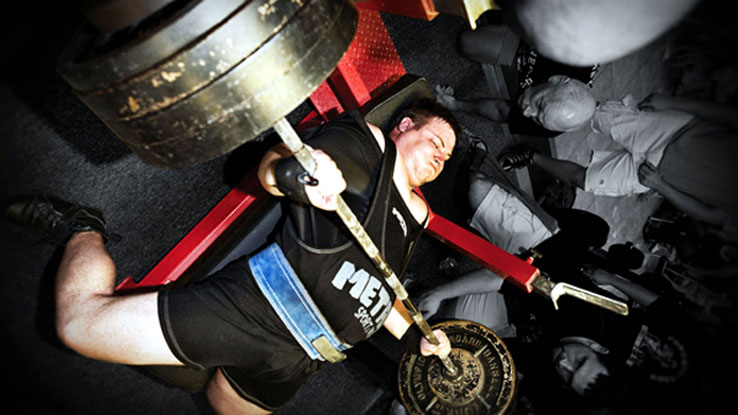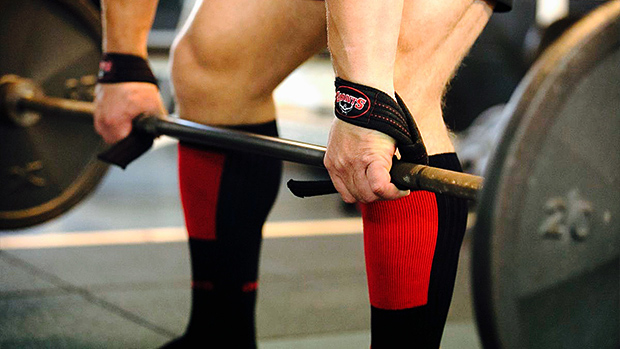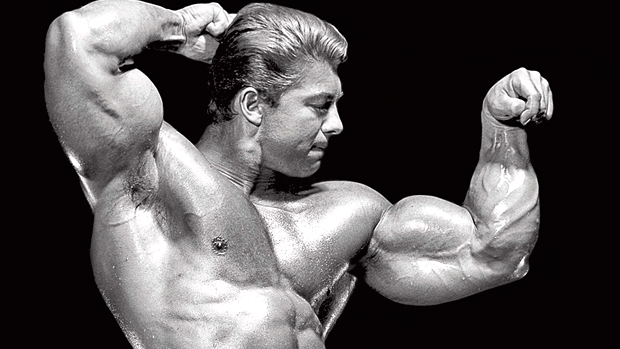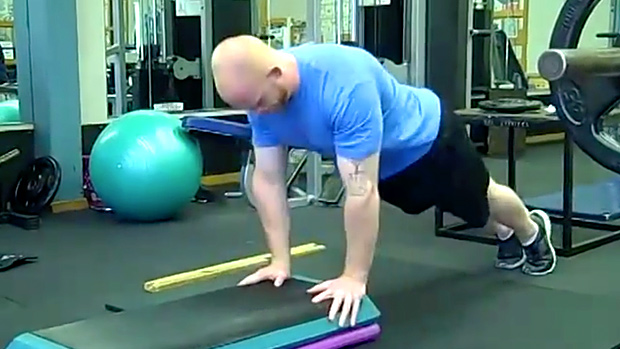5 Exercises to Build Standing Rollout Strength
The rollout is one of the best "ab" exercises. It really teaches you how to brace your trunk. The rollout is also a great exercise for training correct lumbopelvic positioning and its stability.
Rollouts done from a standing position train everything rollouts from the knees do, but to an even higher degree. They also introduce more body segments that must be held together through muscular tension.
To pull off a standing rollout, you must be able to transfer force throughout the entire body, and apply that force into the ground (through the roller). Any slack joints will render the exercise dangerous and inefficient at best.
Warning: Get good at kneeling rollouts first! Once you can breeze through multiple flawless sets of 15-plus reps from the knees, you can move onto the feet. Here's how to master the movement.
If you don't have the strength to pull yourself back up from a standing rollout, this is the most effective way to build it. As you fall toward the ground, brace the abs hard, tighten the hip flexors and quads, and push the wheel into the ground using the lats.
Once you reach the point that you can no longer hold yourself up, collapse to the ground. Don't try to pull back on the wheel at all. Conserve your energy for each negative rep.
Once you hit the ground, reset and do your next rep. To focus on keeping a high amount of tension, keep reps below 5. Make sure to fight for more and more distance (before you collapse) as you get stronger.
- Cons: Starting out, you won't be able to go far before crumbling. That's fine. Just keep fighting for more range of motion as you get better at keeping tight.
- Pros: Forces you to hold tension through the shoulders, trunk, hips, knees, and ankles. If performed correctly, each rep will be done to nearly maximal effort.
Instead of collapsing all the way to the ground at the point of failure, collapse to the knees. This shifts the point of contact from the feet to the knees. From here it's just like a kneeling rollout. Complete the rep by pulling the wheel back and standing back up. This shouldn't feel as intense as full negatives, so shoot for 5-10 reps.
- Cons: Allows you to disengage the tension being held through the quads. This is something that will need to be trained to eventually do a full rep.
- Pros: Doesn't require as much discipline in keeping tight as full negatives do. You'll be able to hit full range of motion with each rep at this lower intensity.
Using bands will help un-load the exercise by providing assistance. Any rolling device can be used here, but either a classic ab roller or a barbell work the best. Anchor a set of bands to a power rack or something stable. Loop the bands through the roller and you're set to go.
As you go further into the range of motion, the bands tighten up and help pull the wheel back. Minimize the assistance by keeping closer to the anchor point or by using lighter bands.
To ensure you aren't just springing back up with the assistance of the bands, use a band light enough so you can't exceed 8-10 reps. (Follow the same rule for the remaining methods as well.)
- Cons: It's easy to become too reliant on the bands. Use just enough band assistance to train each rep at a very high effort.
- Pros: The bands demonstrate the importance of dragging the wheel back and keeping tension in the lats. It's the exact force you must to apply to the wheel in order to get yourself pulled back on your own.
Another way to use bands is to use them to un-load your body. To do this you'll need to create a sling from a pull-up bar. Standing directly below, loop your body through the band (keeping it close to the hip crease will provide the most amount of assistance), and do a standing rollout.
You'll notice that as you near the ground, the band tightens and helps pull your body back up. You can increase the intensity by using lighter bands or by adding more length to the bands. Adding more length means that you won't get help from the band until further into the range of motion.
- Cons: It can be a little awkward to get in and out of the band, and it's easy to rely on the bands too much.
- Pros: The most adjustable way to train a standing rollout. Even a fat bastard could do these with heavy enough bands.
If you have access to a power rack (band pins make this work even more nicely), you can string a band across and use it to "catch" your weight as you fall closer to the ground. Progress by using lighter bands or by setting the band at a lower height.
- Cons: Not everyone will be able to set this up, and again, it's easy to rely too heavily on the band.
- Pros: Easy to adjust band strength and height, and allows you to feel the exercise without any band tension at certain points.
As a general rule, train these exercises using lower reps. One single standing rollout done with a high amount of tension beats a set of 10 slack and sloppy reps!





